The Apple iPhone 6s and iPhone 6s Plus Review
by Ryan Smith & Joshua Ho on November 2, 2015 8:00 AM EST- Posted in
- Smartphones
- Apple
- Mobile
- SoCs
- iPhone 6s
- iPhone 6s Plus
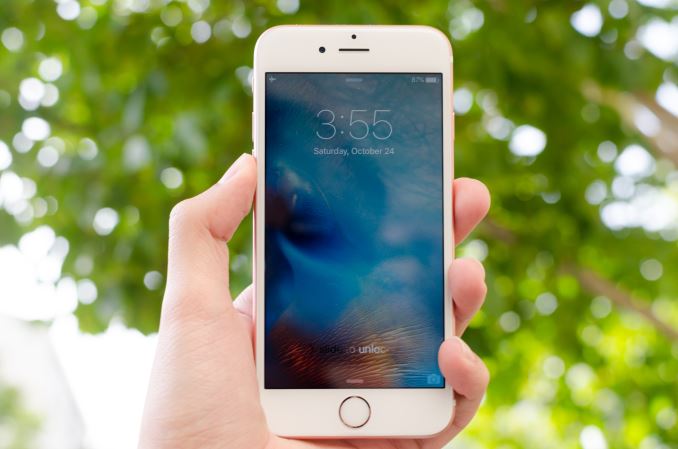
To be perfectly honest, this past year has been remarkably boring in the mobile segment. For whatever reason, phones have either stood still or regressed when it comes to overall quality. There are a few stand-outs that have been worth talking about like the Galaxy S6 lineup and the Galaxy Note5 lineup, but for the most part every phone I’ve reviewed this year has been disappointing in some way. I carry an iPhone 6 to make sure I stay current on changes in iOS, but my primary phone continues to be an HTC One M7. I was hoping to get a new Android phone this year, but so far nothing has really piqued my interest.
Part of the problem this year is that performance and battery life haven't been the most impressive in a lot of cases. By this point, it's really not a surprise that Snapdragon 810 doesn't deliver as much performance as it needs to for the amount of power that it draws. However, even independent of SoC it seems a lot of OEMs haven't really pushed the bar in design or attention to detail. Some phones have cameras with almost unacceptable post-processing quality, others continue to have poorly calibrated displays, and the ones that have none of those have problems with software experience or something else. In general, no Android phone I've seen this year really delivers everything that I'd want in a single package. There are phones that are clearly better than others, but nothing that rises to the level that I'd want before putting down a few hundred dollars.
In light of this lack of competition in the market, it's arguable that Apple is facing less competition than before. The iPhone 6s would continue to sell quite strongly even if this year's refresh was relatively minor as they would still end up quite strong competitively as they would be able to capitalize on momentum from previous years. If you were unfamiliar with the iPhone 6s and Apple's iPhone launch cycle, at first you might be convinced that Apple has done exactly that. However, in general the iPhone release cycle is such that industrial design is constant for two years at a time, so every other year sees a design refresh. When the design isn't refreshed, the phone often carries significant internal changes. In the past, the iPhone 3GS brought a better SoC, a faster modem, and a better camera. The iPhone 4S brought a new SoC, camera, and Siri. The iPhone 5s brought a new SoC, camera, and TouchID. In general, we can see a pretty clear pattern of evolution but it seems that with the 5s the refresh launches have generally brought new features as it has become insufficient to simply ship a faster SoC and possibly a modem and camera refresh to justify a new smartphone.
In the interest of diving into these changes at a high level, we can start with our usual spec table, which can give an idea for whether there's anything immediately worth talking about.
| Apple iPhone 6s and 6s Plus | ||||
| Apple iPhone 6 | Apple iPhone 6 Plus | Apple iPhone 6s | Apple iPhone 6s Plus | |
| SoC | Apple A8 2 x 1.3GHz Apple Typhoon |
Apple A9 2 x 1.85GHz Apple Twister |
||
| GPU | PowerVR GX6450 | PowerVR GT7600 | ||
| RAM | 1GB LPDDR3 | 2GB LPDDR4 | ||
| Display | 4.7-inch 1334 x 750 IPS LCD | 5.5-inch 1920 x 1080 IPS LCD | 4.7-inch 1334 x 750 IPS LCD | 5.5-inch 1920 x 1080 IPS LCD |
| Size / Mass | 138.1 x 67 x 6.9 mm, 129 grams | 158.1 x 77.8 x 7.1 mm, 172 grams | 138.3 x 67.1 x 7.1 mm, 143 grams | 158.2 x 77.9 x 7.3mm, 192 grams |
| Camera | Rear Facing 8MP iSight with 1.5µm pixels + True Tone Flash Front Facing 1.2MP F/2.2 |
Rear Facing 8MP iSight with 1.5µm pixels + True Tone Flash + OIS Front Facing 1.2MP F/2.2 |
Rear Facing 12MP iSight with 1.22µm pixels + True Tone Flash Front Facing 5MP F/2.2 + Retina Flash |
Rear Facing 12MP iSight with 1.22µm pixels + True Tone Flash + OIS Front Facing 5MP F/2.2 + Retina Flash |
| Storage | 16GB/64GB/128GB | |||
| I/O | Apple Lightning connector, 3.5mm headset | |||
| WiFi | 2.4/5GHz 1x1 802.11a/b/g/n/ac, BT 4.2, NFC | 2.4/5GHz 2x2 802.11a/b/g/n/ac, BT 4.2, NFC | ||
| Price | $549 (16GB) | $649 (16GB) | $649/749/849 16/64/128GB | $749/849/949 16/64/128GB |
At a high level, there are already a number of changes that we can talk about. The SoC is new and improved for this year with improved performance and power. The rear camera now supports 4K video recording and has higher resolution photos than what we’ve seen before. The front-facing camera is now higher resolution as well. The iPhone 6s finally has 2 GB of RAM, with improved power and bandwidth along with improved multi-tasking that comes from additional RAM. The modem now uses less power and also capable of higher throughput, as is the WiFi chipset.
Outside of these spec sheet changes, Apple has implemented a number of new features. One of the major highlights is 3D Touch, in which the display is force-sensitive and allows for new user interface actions based upon the amount of pressure applied to a point on the display. The front-facing camera now uses the display as an LED flash of sorts in low light, which measures ambient light in order to determine what white balance to use along with a backlight driver that temporarily spikes brightness to up to three times the normal maximum brightness for effective lighting. Both cameras now have Live Photos, which records a 1.5 second segment of video before and after the photo taken to capture a moment rather than an instant without the complication that comes with videos.
Design
Of course, before we can get into all of these changes we can start by focusing on the most immediate change, which is the design. For those that are unfamiliar with Apple’s iPhone launch cycle, the S launch cycle usually retains the same industrial design as the previous iPhone. As a result, the changes here are rather scarce. Those interested in a detailed description of the design should refer back to the iPhone 6 review.
However, there have been changes to the look and feel of the iPhone 6s lineup. The first, and most immediate change is the addition of a new color that Apple calls Rose Gold. This is much redder in tone than what we saw with the Apple Watch Edition, to the extent that it looks more like a light pink with a gold tinge rather than gold with a light pink tinge. I’m probably the last person in the world to consult on what color looks best, but I don’t really see anything wrong with this color.
Outside of color, the iPhone 6s lineup has changed in a noticeable way when it comes to materials and in-hand feel. The aluminum back cover is now 7000-series, which increases rigidity with the addition of zinc which increases yield strength, or the pressure needed to permanently deform the material. It’s likely that relative to the iPhone 6, ultimate tensile strength has also increased, although given that tensile strength is a test of how well the metal avoids breaking apart it’s unlikely that this property matters all that much. If you're actually reaching the ultimate tensile strength of a phone's back cover, you've probably already broken everything else in the phone.
With the use of this new aluminum back cover, the phone should be less susceptible to bending under extreme forces. I never had a problem with this when testing the iPhone 6 last year, but it shouldn’t be a problem now. Oddly enough, I did notice that the iPhone 6s is easier to grip than the iPhone 6, but the difference isn’t big enough that I would avoid using a case.
The other change is a new type of cover glass on the display, which uses a dual ion exchange process to make it tougher. According to Apple, this glass is the most durable of any in a smartphone today. A simple search with Google gives reason to suggest that Corning is making this glass as Corning holds a patent for this process. While we have no idea what Apple’s process is, the same dual ion exchange process occurs, which creates two distinct stressed layers that improves impact strength relative to a standard single ion exchange that is seen in Gorilla Glass.
Other than this, the design of the iPhone 6s remains quite good. The rounded edges and slightly curved glass help with in-hand comfort and things like the placement of the 3.5mm headphone jack on the bottom is a smart idea as the headphone jack is easily accessible when the phone is inside a pocket. We can talk about how the camera hump means that the phone doesn't rest completely flat on a table, but given that the phone has gotten about 15 grams heavier in both the iPhone 6s and 6s Plus I suspect it makes sense for Apple to avoid making the phone any thicker with extra battery than they have now. I would rather see thinner lines to insulate antennas here, but I suspect that there is some RF requirement that makes it difficult for this to happen.
Compared to something like the HTC One M9 which also has an aluminum unibody design Apple is far ahead in terms of overall ergonomics and cohesiveness. Relative to the Samsung Galaxy S6 I think the iPhone 6s is noticeably more comfortable due to the more rounded edges, but the iPhone 6s Plus and Galaxy Note 5 are pretty close in overall ergonomics. I do wish Apple would go to a front-ported speaker for the iPhone, but it seems that this is unlikely to happen due to the home button and bezel constraints.


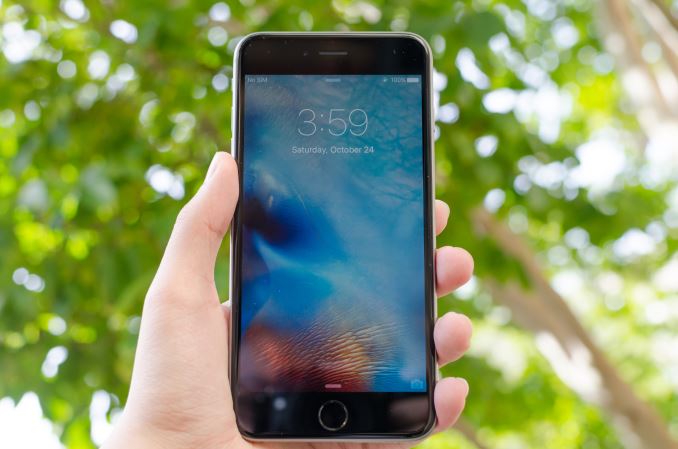
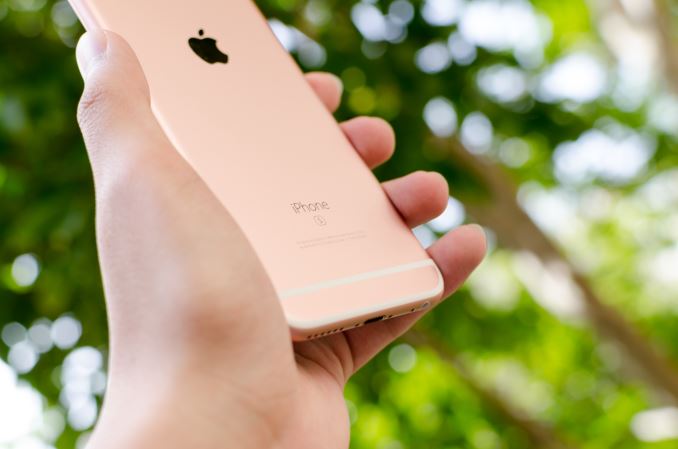
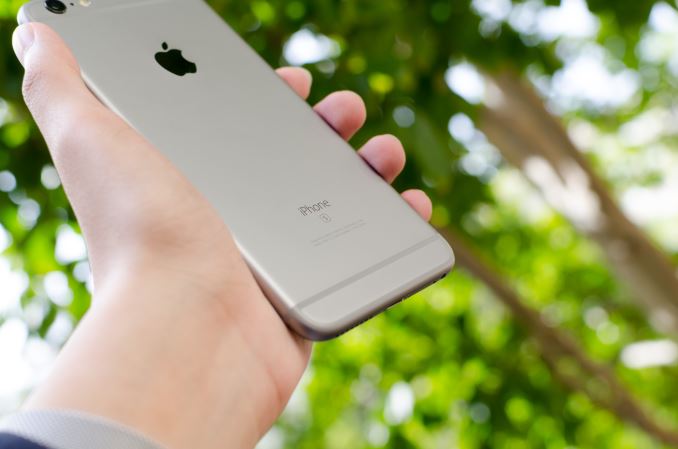
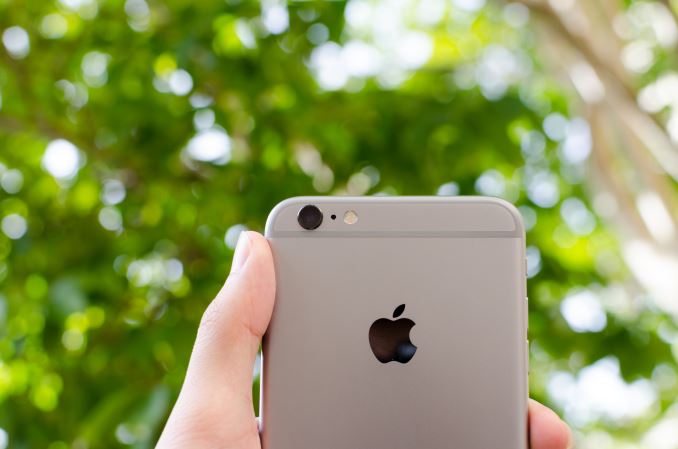
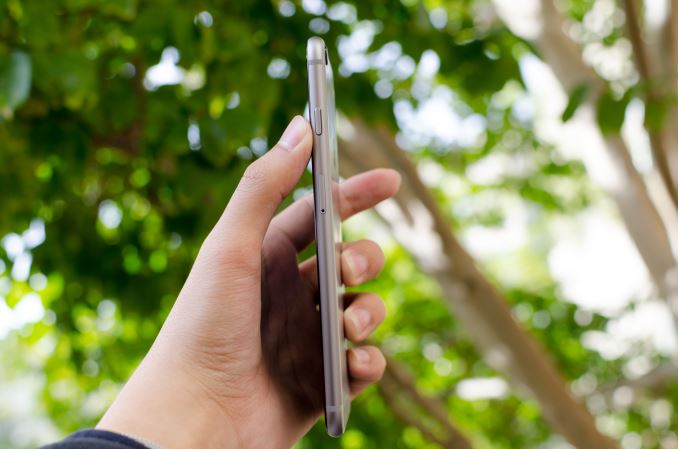
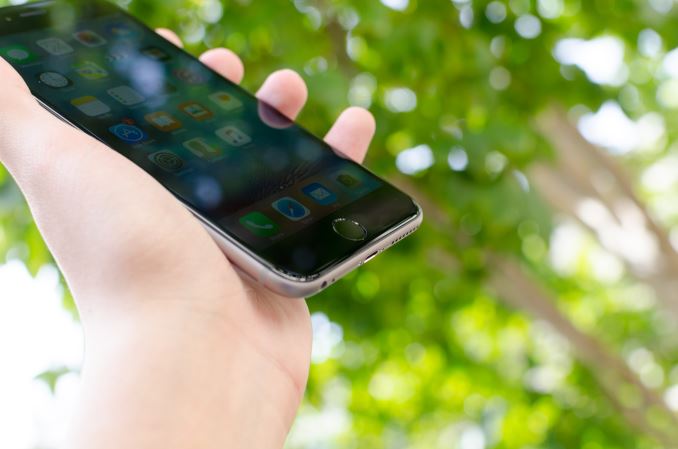
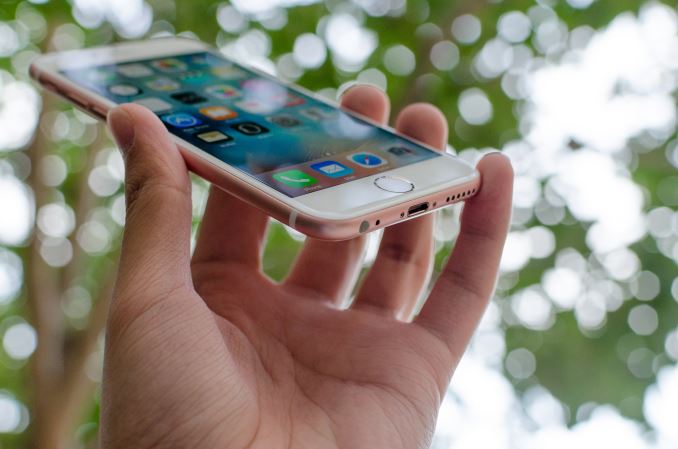








531 Comments
View All Comments
toukale - Monday, November 2, 2015 - link
Damn, "Now."Kevin G - Monday, November 2, 2015 - link
Not only is it enough to scare all other ARM SoC's but Intel has to be frighten by what Apple's engineers are capable of. Normalizing for clock speeds, it seems that the A9 is around Sandy/Ivy Bridge IPC and now with FinFET, there is a clock speed overlap with those chips as well. Intel has two newer generations of core designs (Haswell and Sky Lake) but they don't offer huge leaps over Sandy Bridge/Ivy Bridge. I'm really, really curious how the A9X in the iPad Pro will perform against various Core M designs in tablets. It is very conceivable that Apple could take the performance crown.Against low power i3/i5/i7 Sky Lake chips, Intel should still have performance lead. Granted those chips have a higher power budget it but it makes me wonder what Apple could pull off with a similar power budget.
As for the A9 itself, it is a very solid improvement and there is still room to grow. My personal prediction for the A9, SMT, appears to be absent. Considering the width of the A9 design, there should be some performance gains. Certainly while running in a 4T2C mode, power consumption will be higher, 2T1C should be lower power than 2T2C.
My predictions for the A10? I'm still sticking to the idea that SMT in Apple's CPU designs make sense so there is that. 4 MB of L2 cache and 12 MB of L3 cache are natural evolutions of their current topology. The GPU will core to an 8 core Rogue 7 design. The real SoC change will be in the memory subsystem with Apple adopting WideIO. I predict that the iPhone 7 will be the first product to drop the lightning connector and offer a USB Type-C port so USB and DisplayPort block will be included in the next iteration.
aliasfox - Monday, November 2, 2015 - link
While Intel should be worried about the performance Apple's SoC engineers are capable of, what they should really be worried about is price. Sure, Apple might only offer 75% of the performance of a ULV Core chip, but when it comes at 20-30% of the price, that's serious competition.Kevin G - Monday, November 2, 2015 - link
There is the whole dichotomy of Apple being an end product supplier with the iPhone/iPad vs. Intel being a parts supplier. There is also the difference that Apple needs a third party to manufacture the A9 chip where as Intel does this in house. Intel is more of a middle man here and thus inflates the end cost of the OEM handsets and tablets. Intel can make the same amount of profit if they were able to spur volume sales but that trade off has never appealed much to Intel who historically enjoyed healthy margins on component pricing.name99 - Monday, November 2, 2015 - link
Guys, it's time to stop this pretense that Apple is "almost" at Intel performance.Apple IPC has exceeded the best Intel has to offer by about 15%.
(gcc SPEC)
A9 vs haswell = 3148/1.85 / 4800/3.3 = 1.16
http://gcc.opensuse.org/SPEC/CINT/sb-czerny-head-6...
i5-4670T boost 3.3G ~4800
Or compare against the Broadwell in a MacBook:
https://browser.primatelabs.com/geekbench3/compare...
(Note that while the Bwell is nominally at 1.3GHz, Geekbench is short enough that it can turbo at 2.9GHz)
With the A7 Apple got an "inner" core that was equal to the best Intel has to offer. With the A9 they now have an uncore that matches Intel (look at all the memory dependent benchmarks in the Geekbench comparison above, things like Sobel, Sharpen, and FFT --- Apple now matches Intel pretty much exactly).
The only place where Apple still lags behind Intel (as far as the mobile space is concerned) is turbo-ing (ie an accurate on-SoC thermal model that allows parts of the SoC to run faster than rated up until the thermal budget is exceeded).
This does not necessarily mean that turbo is the feature Apple will implement next. There are other directions they could go which provide (in their opinion) a better tradeoff, at least for now, than turbo'ing. Possibilities include
- het core (add a low power low performance core. This sounds like big.LITTLE, but done right. The core selection and switching is done by a dedicated microcontroller which is tracking various CPU statistics like branch mispredictions and cache misses and using those to decide which core to use. The OS only sees one CPU; the het core is purely an internal implementation detail.
Done right papers suggest this can buy you about 20% power reduction.)
- KIP (kilo-instruction processor). A set of ideas that extend OoO from its current ability to tolerate latency out to L3, but not all the way to RAM, all the way out to RAM. This requires a ROB of size 1000 or so, and numerous modifications to allow the physical register set and load-store queues to match this size.
- post-rename loop buffer. Places the loop buffer not just after fetch, not just after decode, but all the way after rename. Requires various modifications (to handle the "frozen" renaming) but capable of a nice drop in power whenever executing out of the loop buffer.
Apart from starting down these paths, the obvious visible change for the A10 would appear to be that they
- drop 32-bit support (which should probably allow them to drop at least one pipeline stage, and simplify the decoder substantially)
- add support for the ARMv8.1a instructions.
SMT is (IMHO) a low priority for Apple. They can add more cores faster than they can design in SMT, and area won't be a critical constraint until the Moore's law scaling party stops.
vFunct - Monday, November 2, 2015 - link
They basically already have big.LITTLE with their M9 co-processor.doggface - Monday, November 2, 2015 - link
I'm sorry but no. Your geekbench scores mean nothing. Intel still has quite the lead. Otherwise Apple Mac book Pros would be using Apple SOCs.Apple will find that all the easy gains in CPU ipc/clocks are disappearing and like intel will struggle to make speed improvements beyond a certain level. Then chip cost will start going up. It is inevitable, it is physics.
All that aside. The A9 is impressive. Kudos to Apple.
IanHagen - Wednesday, November 4, 2015 - link
Whilst I agree mostly with you, the MacBook Pros don't sporting an Apple SoC is IMHO proof of nothing. The migration will be very costly and will brake compatibility with a ton of software. They can't simply slap a nice ARM chip on that thing and call it a day.DerekZ06 - Wednesday, November 4, 2015 - link
Switching architecture on the Mac book pros is like going from powerpc to x86 all over again.gonsolo - Tuesday, November 3, 2015 - link
Interesting. Can you quote some of the mentioned papers?